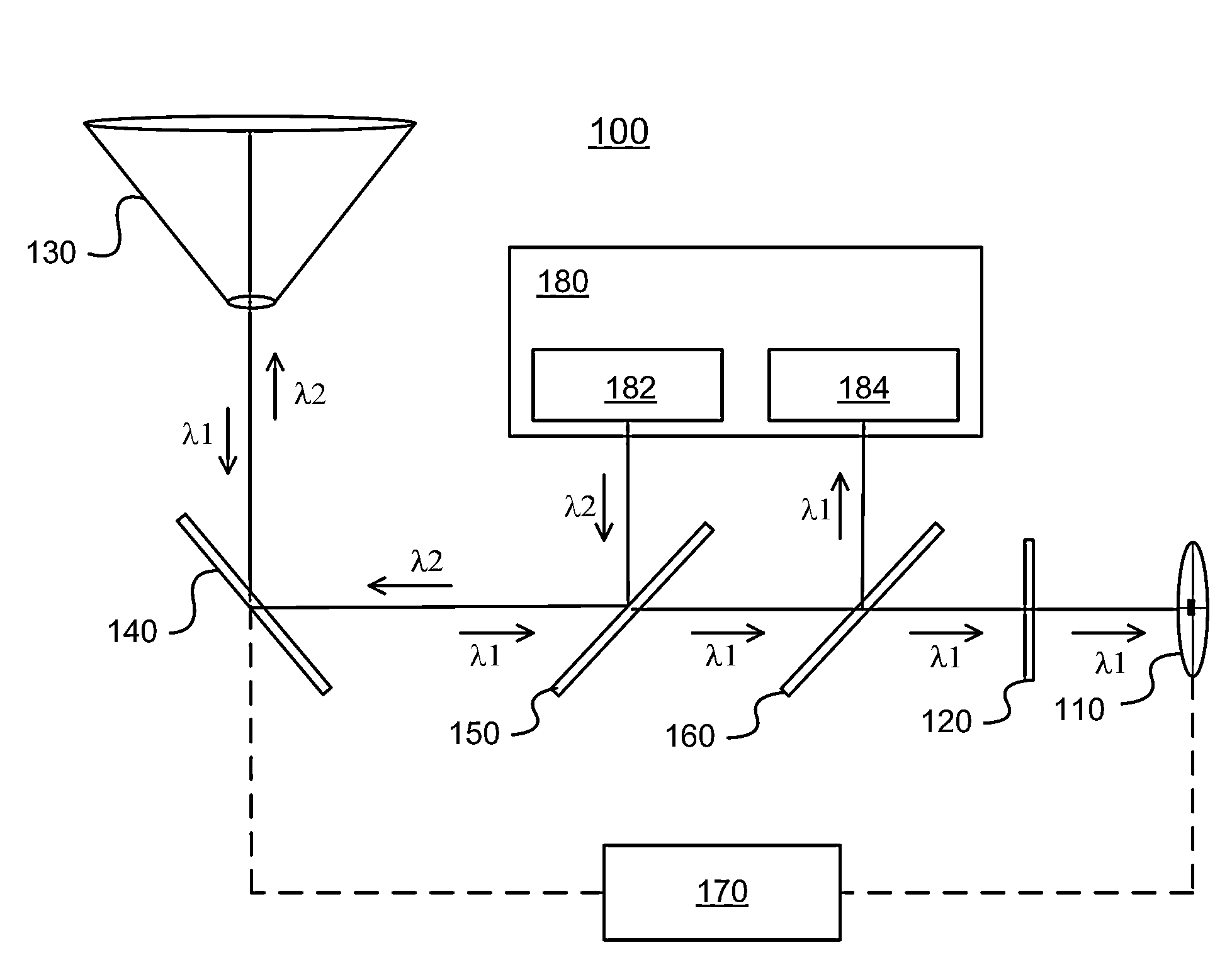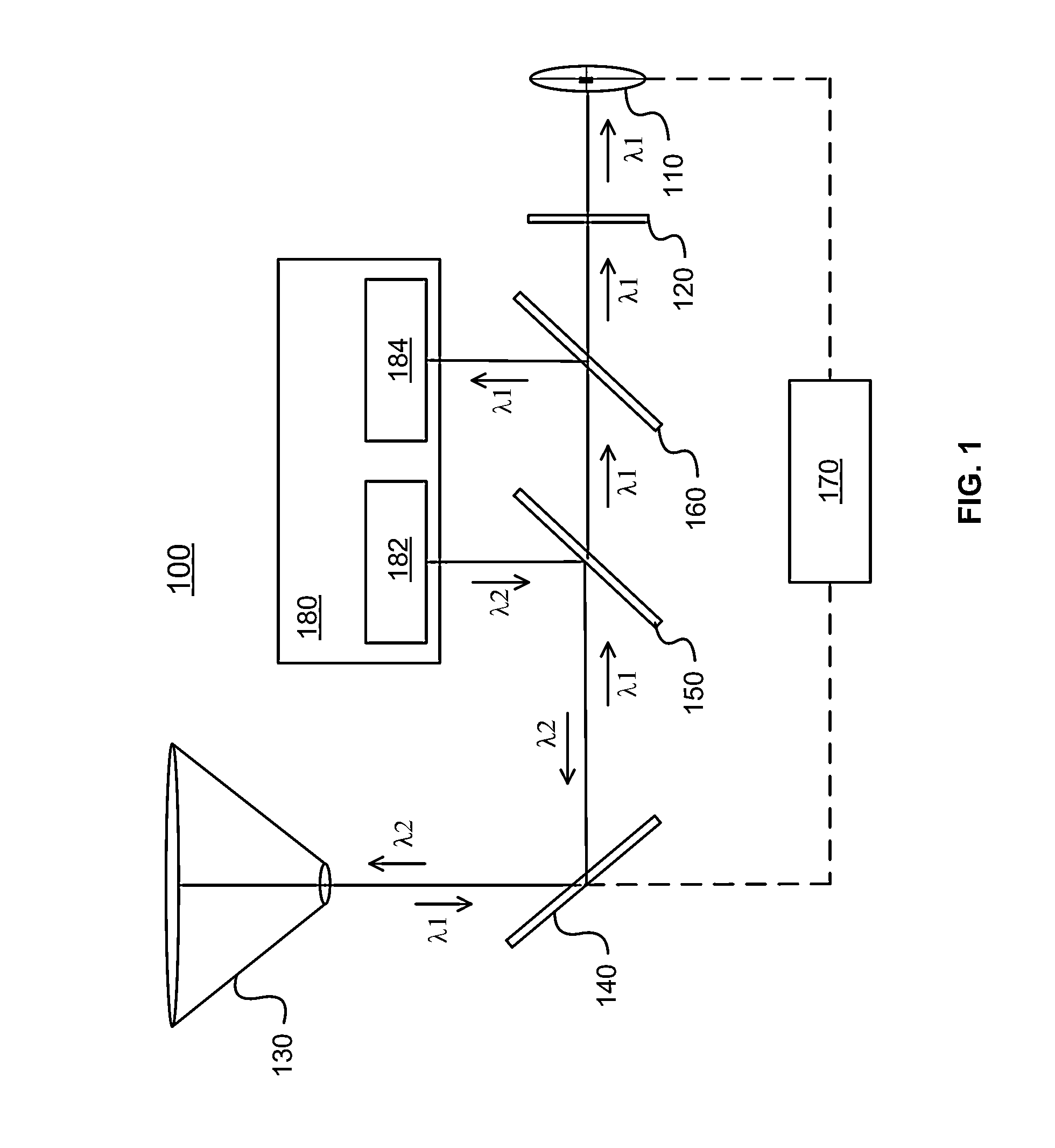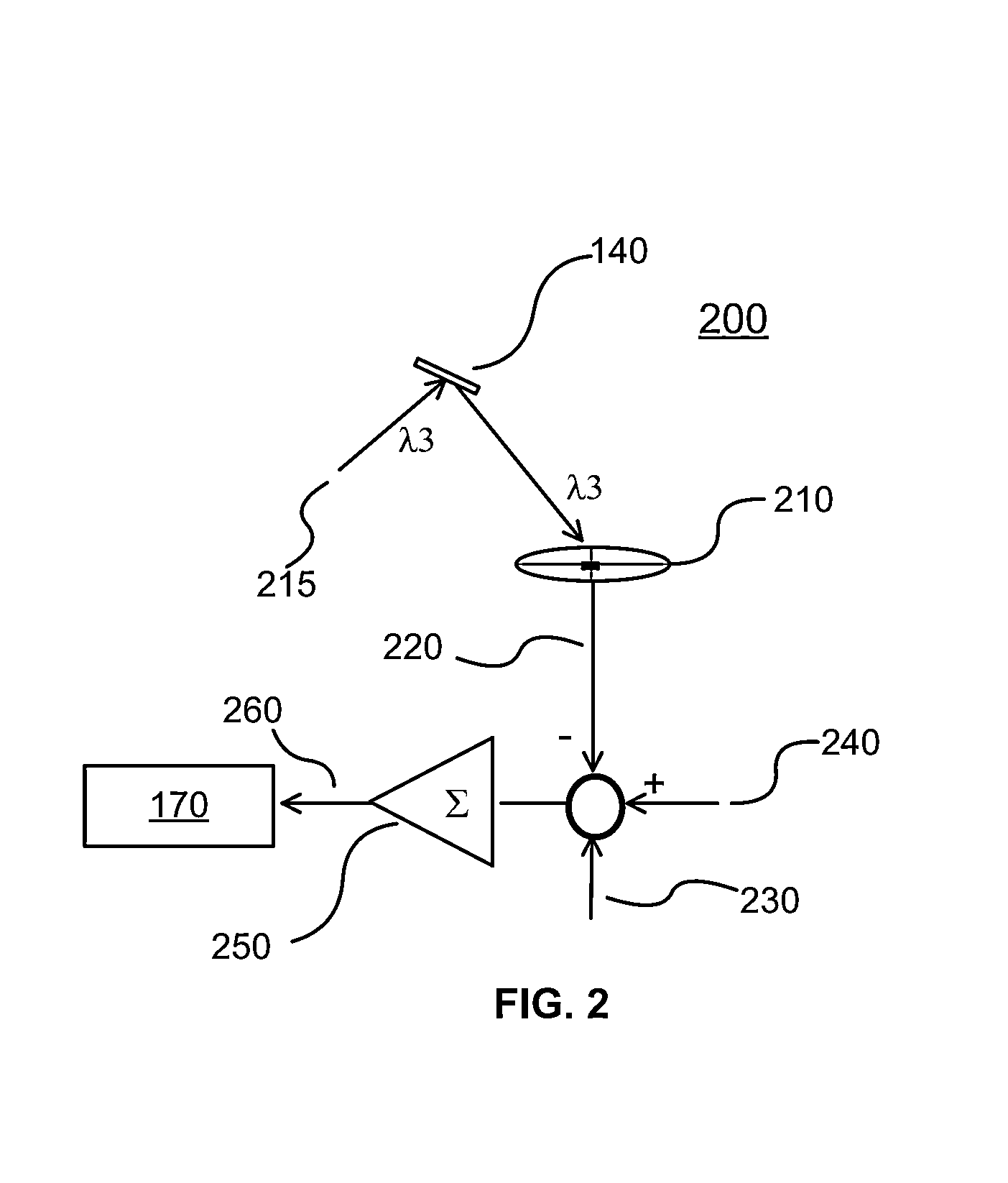Simple low cost tip-tilt wavefront sensor having extended dynamic range
a wavefront sensor and dynamic range technology, applied in the field of free space optical (fso) communications, can solve the problems of aberration error, poor seeing conditions, degraded spatial resolution, etc., and achieve the effect of low cost and high reliability system
- Summary
- Abstract
- Description
- Claims
- Application Information
AI Technical Summary
Benefits of technology
Problems solved by technology
Method used
Image
Examples
Embodiment Construction
Overview and Benefits
[0020]Adaptive optics systems that compensate for wavefront aberrations typically represent a significant production cost to Free Space Optical (FSO) system manufacturers. For example, a typical adaptive optics system may include a deformable mirror to perform wavefront correction, lenses, mirrors, beamsplitters, detectors, amplifiers, a control loop, and the like. Thus, a low cost, reliable, aberration correction system is desirable.
[0021]A low cost, high reliability system for correcting aberrations in optical signals is disclosed. The system uses a tip-tilt correction system that is more cost effective than a higher-order correction system. Such a system trades-off a higher level of correction for a lower production cost. Such a system also has a better link margin, meaning that it can operate efficiently in a wide range of environmental conditions. Due to the reduced cost of a tip tilt correction system vs. a higher order correction system, budget that would...
PUM
 Login to View More
Login to View More Abstract
Description
Claims
Application Information
 Login to View More
Login to View More - R&D
- Intellectual Property
- Life Sciences
- Materials
- Tech Scout
- Unparalleled Data Quality
- Higher Quality Content
- 60% Fewer Hallucinations
Browse by: Latest US Patents, China's latest patents, Technical Efficacy Thesaurus, Application Domain, Technology Topic, Popular Technical Reports.
© 2025 PatSnap. All rights reserved.Legal|Privacy policy|Modern Slavery Act Transparency Statement|Sitemap|About US| Contact US: help@patsnap.com



